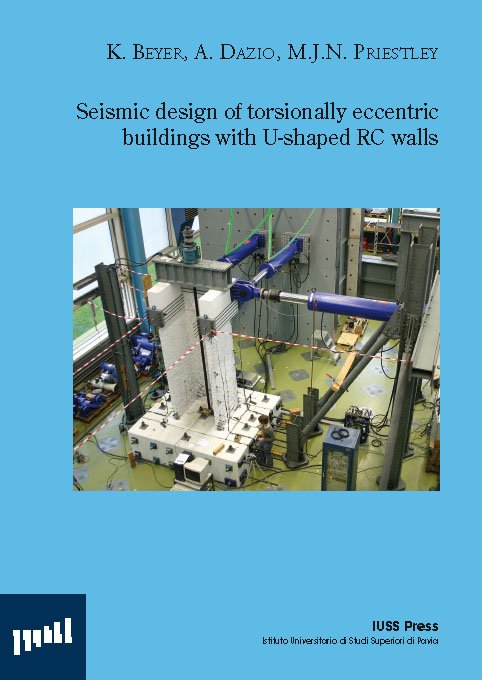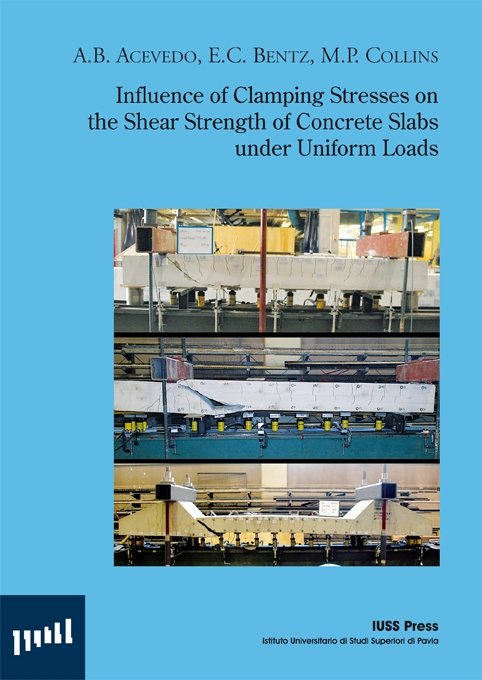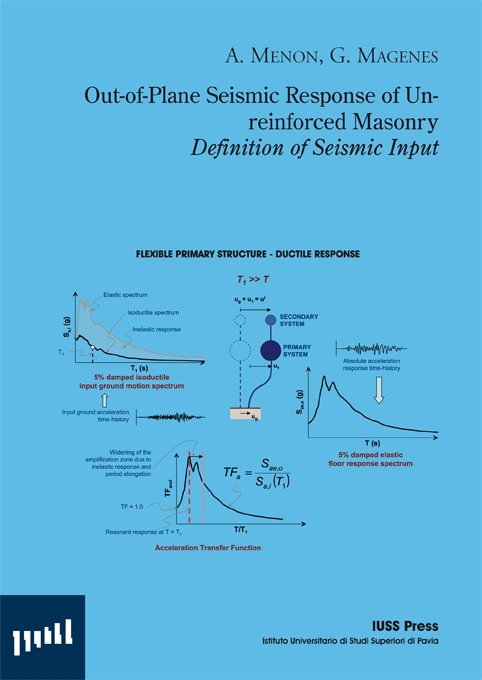Catalogue

Seismic design of torsionally eccentric buildings with U-shaped RC walls
24/03/2008
Influence of Clamping Stresses on the Shear Strength of Concrete Slabs under Uniform Loads
24/05/2008Out-of Plane Seismic Response of Unreinforced Masonry – Definition of Seismic Input
Original price was: € 25,00.€ 21,25Current price is: € 21,25.
A. Menon, G. Magenes
Research Report Rose 2008/04
ISBN: 978-88-6198-021-1
Response of unreinforced masonry (URM) walls to out-of-plane seismic excitation is a complex yet inadequately addressed theme in seismic analysis.
Out of stock
Response of unreinforced masonry (URM) walls to out-of-plane seismic excitation is a complex yet inadequately addressed theme in seismic analysis. Present-day seismic design codes provide dimensioning and detailing rules that impede out-of-plane failure even under severe earthquake load. However, lack of structural detailing (e.g. effective ties, adequately rigid diaphragms, etc.) renders existing URM buildings, typically not designed in accordance with any code, highly susceptible to out-of-plane failure even under low intensities of ground motion. A first step towards addressing the problem should envisage an accurate evaluation of the seismic demand on the walls considering the dynamic filtering effect of the building and its diaphragms and the dynamic response of the walls. The problem is analogous to the response of a generic secondary element in a structure subjected to lateral loading. Ground motion that a URM building is subjected to is modified by two actions before reaching the out-of-plane wall, namely, response of the in-plane walls and, that of the floor diaphragms. The floor diaphragm’s response acceleration, which is the seismic input to the out-of-plane wall, is significantly filtered by the in-plane wall stiffness and will largely comprise of energy at the fundamental period of vibration of the building. Non-linear response of the building alters the secondary system response either by reducing or amplifying the response compared to linear response. Interactions between the response of the primary structure and secondary elements can be fully studied only through inelastic dynamic analysis. The current research deals with the development of a semi-analytical expression for predicting the seismic demand on a secondary element (e.g. out-of-plane wall), in terms of accelerations and displacements, based on statistical evaluation of results of inelastic dynamic time-history analyses treated within a parametric framework for different levels of displacement ductility demand. The present study differs from previous investigations in that it explicitly considers the inelastic response of the primary structure.

